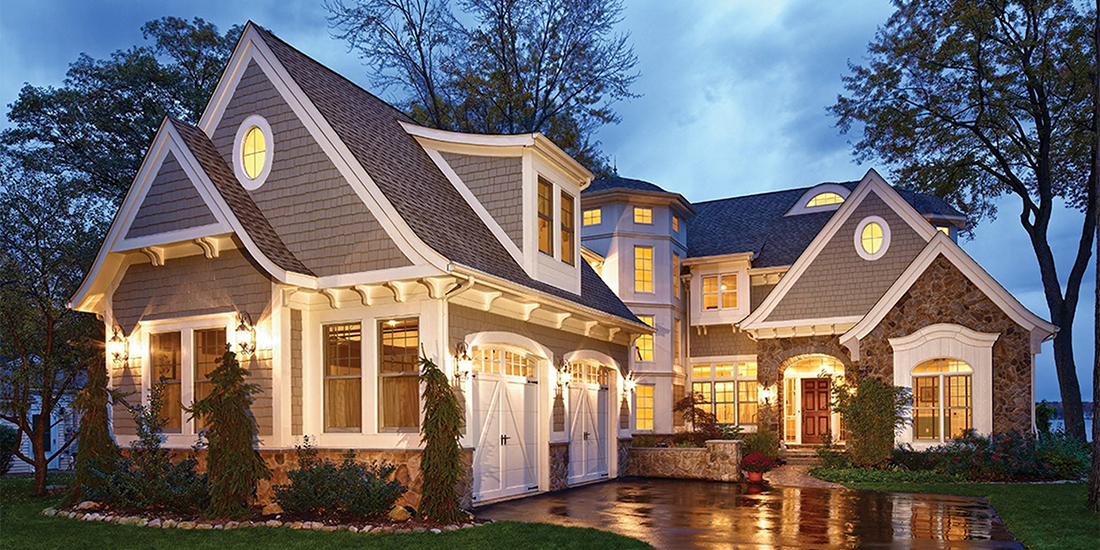
Fiber cement siding. Photo courtesy Allura
Q: My old siding is on its last legs. I know I want my new siding to be fiber cement, but I don’t know if I’m better off with pre-painted fiber cement siding or siding that’s painted after installation.
A: Opting to side with fiber cement siding when remodeling or building a Seattle-area home is a practical and smart choice. Its durability and authentic wood look make it the perfect building material for the tough environmental conditions of the Pacific Northwest. Follow that up with another smart decision by using pre-painted fiber cement siding.
Rainy days in Seattle less than ideal for painting
On average, it rains more than 150 days a year in Seattle. Since paint should only be applied to clean, dry surfaces, it’s recommended to wait a full day after it rains to paint. If you’re trying to squeeze in painting before a rain shower, remember, a coat of latex paint needs at least four hours in the sun to dry. This makes the timeframe for on-site painting in Seattle rather small.
High humidity levels affect quality outcome
If you get lucky with the rain, your luck may run out when it comes to the humidity. Most paint labels recommend painting when the relative humidity is between 40–60%. With an annual average humidity of 76% and a low that rarely goes below 60%, you’ll likely have to break the humidity rule to get the job done. Unfortunately, that will typically void the paint manufacturer’s warranty.
Dust, pollen, and other particles make painting difficult
Tree pollen, leaves, dust, bugs and other airborne debris always find their way to sticky, freshly painted surfaces. Though this isn’t structurally disastrous, it will affect the overall appearance of your siding. There’s no comparison between siding that’s applied and dried inside a state-of-the-art, climate controlled finishing facility and one exposed to the outdoors.
We must also remember that humans aren’t robots. Oftentimes, the consistency and control achieved by machines in a painting facility simply can’t be matched, as it leaves little margin for error.
More exposed parts
Obviously, when paint goes on siding that’s already installed, only the exposed surfaces get painted. When you get pre-painted siding, it’s coated on five sides—front, top, bottom, and each end, all with the same uniform coat. This means more complete coverage and durability with increased protection against the elements.
Limited access to essential (and proprietary) materials
Unlike your retail paint, which is comprised of a clear base tinted at the store with synthetic pigments, the paint formulated for fiber cement manufacturers uses natural color pigments that are ground to create a monochromatic base. So instead of color being mixed in, the mono-base is the color. Such paints are renowned for their superior color retention and longevity.
Repainting sooner rather than later
An on-site paint application doesn’t deliver the same durability as a factory-applied finish, some of which are guaranteed for as long as 15 years—that’s up to twice the durability. In an expensive labor market like Seattle, the cost of repainting your siding sooner can negate any initial savings you thought you’d enjoy.
Think of it like a new car
What if you had the option to have your new car delivered with just the primer applied? Imagine trying to match that factory finish out in your driveway!
This is the unyielding benefit of pre-painted siding. A product finished in a controlled factory setting delivers unrivaled results. On-site applications risk shortcomings, even when done during perfect painting weather. Which, of course, is a luxury we rarely experience in Seattle.
Dale Kruse is the area sales manager for Allura, a member of the Master Builders Association of King and Snohomish Counties (MBAKS). If you have a home improvement, remodeling, or residential homebuilding question you’d like answered by one of MBAKS’ more than 2,600 members, write to homework@mbaks.com.